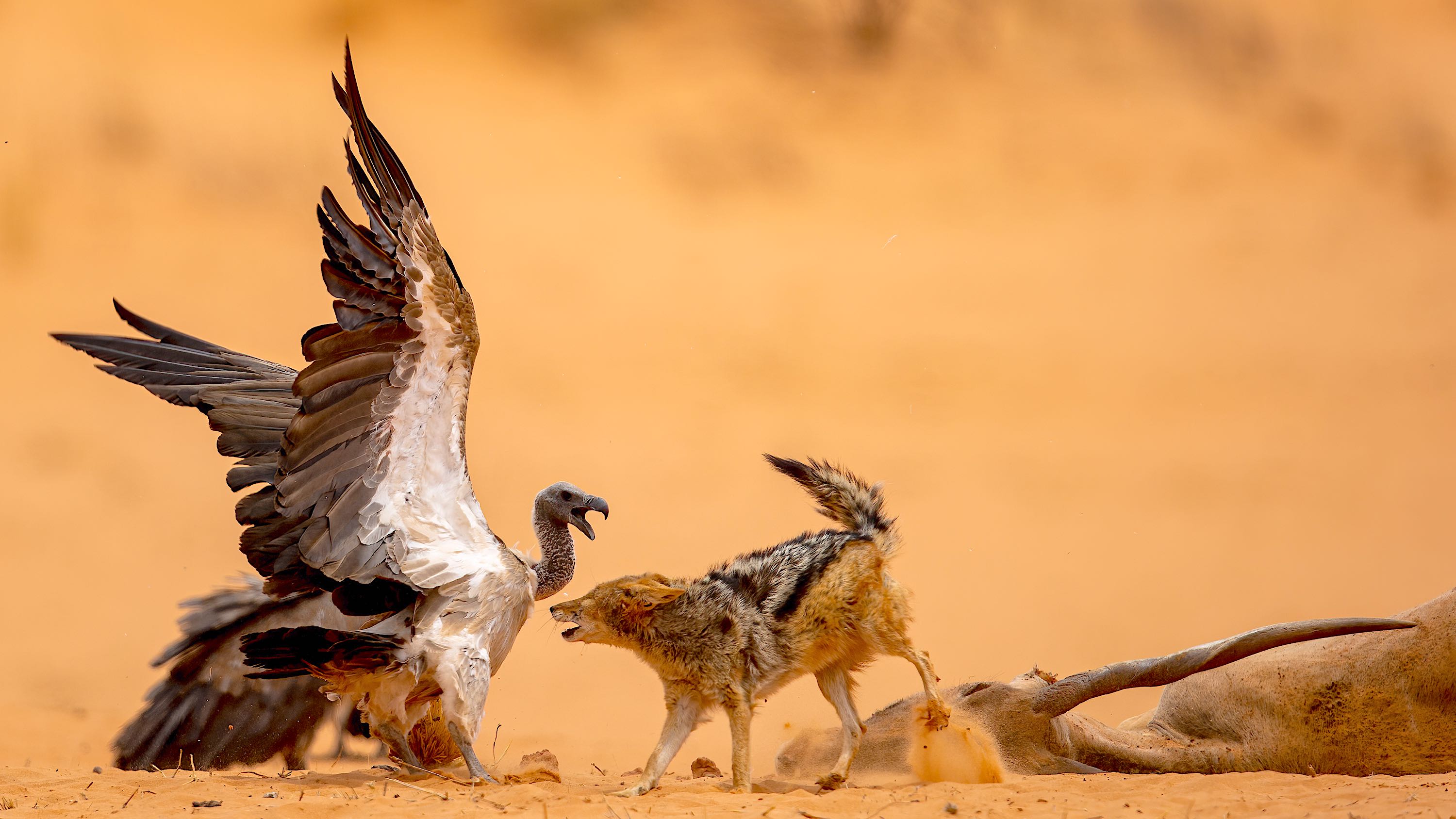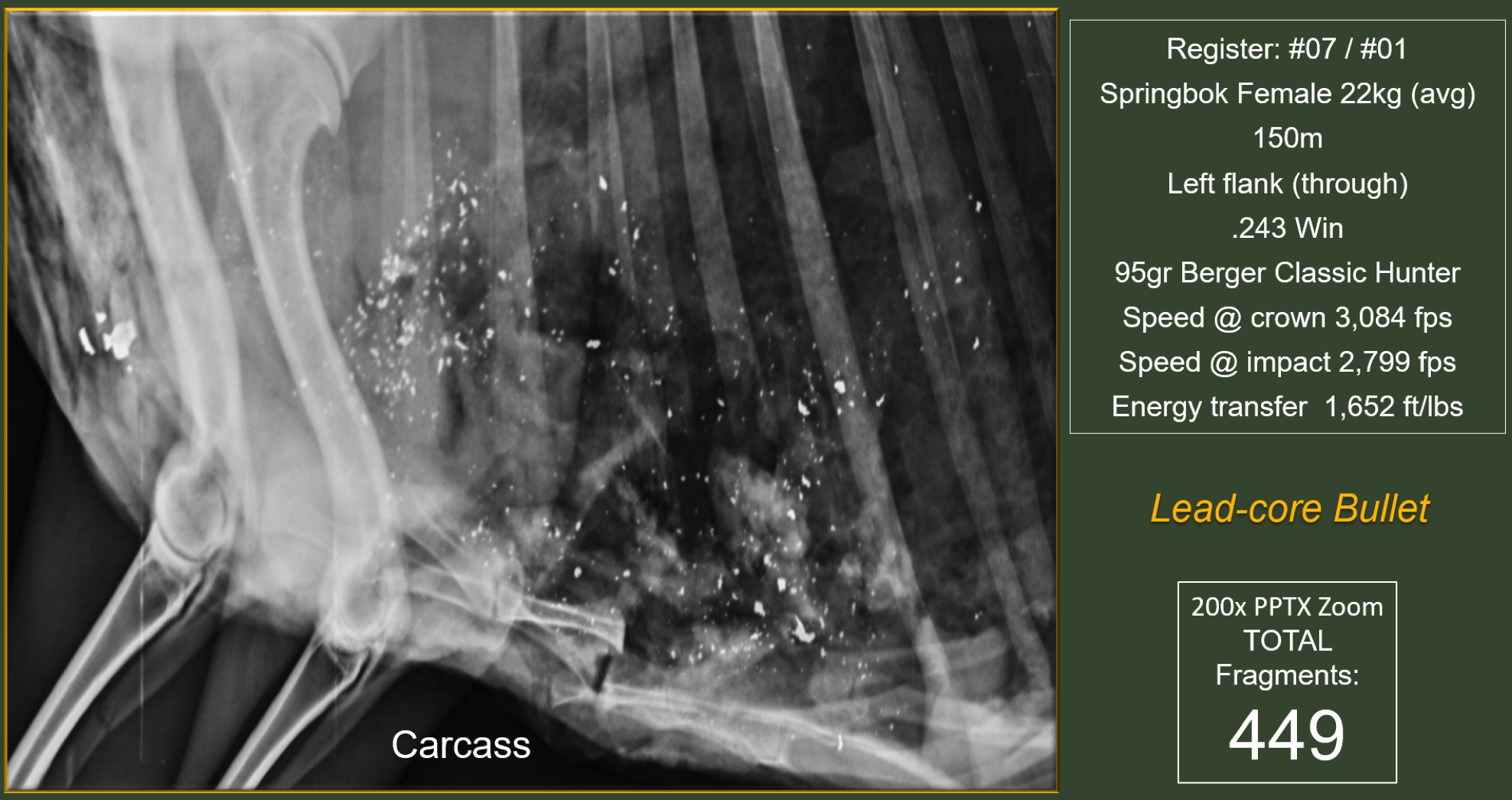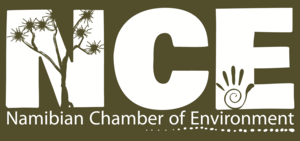

How do you like your meat? Unleaded, please!
6th October 2021
We have known for centuries that lead is a toxic substance. Approximately 95% of the lead that we find in the environment is there because we put it there. The negative impacts of lead on human health are well established, and are particularly severe for children and pregnant women. That knowledge resulted in leaded petrol being phased out, along with a host of other legislation restricting the use of lead. Lead is also an environmental hazard, and there are no safe levels of lead for any biological organism to consume.
Given everything we know about the toxicity of lead, it is surprising that the substance is still used at all. What is even more surprising is that most bullets and fishing sinkers still contain lead, both of which are used for outdoors activities and therefore inevitably land up in the environment. Bullets are a particular threat to human health in Namibia, because many people eat game meat from hunts with lead bullets.
Despite positive moves towards unleaded petrol, paint and other products that have reduced human exposure to lead, we are still in danger of consuming lead when we eat lead-shot game meat. When a lead bullet hits its target, it fragments into tiny pieces. The tiniest fragments of lead that are invisible to the naked eye are actually more dangerous than larger chunks, because they are more readily absorbed in the blood stream. Some pieces are so small that you can only see them if you X-Ray the carcass, which is not exactly a common practice amongst butchers!


A review of studies in Europe that analysed the lead content of various gamebirds and mammal species after the bullet, wound channel and visible fragments had been removed revealed that most game meat samples still contained more lead (often 10-20 times more) than the maximum level of lead allowable in human food in the EU. Reducing the quantity of lead to acceptable levels would require the removal of at least 30cm of flesh on all sides of the wound, which is impossible for smaller gamebirds and would waste a huge amount of meat in larger game.
The adverse health effects of lead are widespread, as this poison damages nearly every major body system and organ. Children absorb lead into their bloodstream more readily than adults, while lead consumption in pregnant women may cause developmental problems in unborn babies. Health researchers have not been able to determine a safe
level of lead in the human body, and lead accumulates in the body over time. Consuming even tiny amounts of lead regularly is therefore likely to cause long-term health problems.
Lead does not only damage human health, however, as all other organisms suffer similarly from lead poisoning. In recognition of this environmental threat, use of lead bullets for hunting in wetlands is already banned entirely in most countries (and lead sinkers may soon follow), yet many authorities and hunting organisations have continued to allow lead bullets for hunting and wildlife management in terrestrial ecosystems. Scavenging birds, including Endangered and Critically Endangered vulture species, are in the greatest danger of lead poisoning from bullets.
There is a growing mountain of scientific evidence showing that lead poisoning through bullet consumption by scavenging bird species in Europe and North America is threatening their health and reproduction. Only recently, however, have African scientists investigated fragmented lead bullets as a threat to vultures. Here, I focus on recent studies from South Africa and Botswana. As yet, no detailed studies on this issue have been done in Namibia (although this study included a few Namibian birds).
In South Africa, 80% of Cape and 66% of white-backed vultures (including adults, juveniles and chicks) had blood lead levels above what would be expected from background exposure (e.g. lead in the air or soil that birds consume when preening). Even some chicks still in the nest had high blood lead levels, indicating that their parents are inadvertently feeding them lead when they regurgitate meat for them. Blood tests for lead reveal whether the bird has recently (i.e. in the last few weeks) consumed lead, while bone tests show the long-term accumulation of lead. The bone tests on dead birds (killed by colliding with power lines or wind turbines) showed that 9% of Cape and 12% of white-backed vultures had high enough lead levels to negatively affect their health or even contribute to their deaths.

One of the many consequences of chronic lead exposure affects the birds spatial awareness and flying ability, as lead destroys the neurological system, which would make them less able to avoid infrastructure like power lines. Vultures with high levels of lead in their bodies can be lethargic, anorexic and weak, among other things. Even if the bird does not die due to lead itself, all of these symptoms reduce its reproductive success and could make it more vulnerable to other causes of death.
Do we have evidence that the vultures are getting their lead from hunted carcasses? Since lead has permeated the environment from many sources, perhaps other bird species are suffering just as much from lead poisoning, or perhaps the vultures are somehow ingesting lead from sources entirely unrelated to hunting? In the South African study, the researchers tested other birds that dont tend to scavenge (e.g. eagles, buzzards, cranes) to see whether lead was a more general problem than just in vultures. Unlike the vulture results, none of these birds had lead levels greater than would be expected from background lead exposure obtained from the air or soil.
Another study in Botswana more closely examined the links between hunting and lead exposure in white-backed vultures. They measured blood lead levels in vultures caught outside vs. inside the hunting season and those caught outside vs. within private hunting ranches. Because the blood levels show recently consumed lead only, this was a good test to see whether vultures are exposed to lead specifically due to hunting. They found higher lead levels in vultures inside hunting season and within hunting areas when compared with those outside the season and in non-hunting areas, respectively. This strongly suggests that the gut piles left by hunters and scavenged by vultures were indeed the source of lead.

Another finding from Botswana nonetheless shows a different side of the hunter-vulture relationship. They tested lead levels in vultures before and during the state-imposed moratorium on hunting in Botswana. Surprisingly, they found that white-backed vultures had higher blood lead levels during the moratorium than before it was imposed. The vultures in this study were sampled on private hunting farms, which were the only parts of the country where hunting continued even during the ban. The researchers suggest that the lack of hunting elsewhere resulted in vultures concentrating on private lands where carcasses were more readily available. The remnants from hunts thus create mini vulture restaurants
, which can be an important food source for vultures. In the absence of lead ammunition, hunting activities would actually help these endangered species.
Thankfully, the problem of lead poisoning in humans and vultures due to ingesting bullet fragments from game meat and carcasses is solvable. The solution is to switch to non-lead ammunition. It is time for hunters and fishers, who enjoy activities that are supported by a healthy environment (and often eat what they kill), to remove lead entirely from the hunting and fishing equation.
Some hunters doubt whether non-lead ammunition can perform as well as lead bullets, in terms of accuracy and animal welfare (measured by the distance an animal travels after the shot). If the ballistics of non-lead bullets make them less accurate, or the impact on the animal is not substantial enough, one would expect a higher wounding rate or the animal taking longer to die even if shot placement is accurate. Studies from North America and Europe, where non-lead ammunition has been manufactured for several decades, show that non-lead bullets perform as well or better than lead bullets (for more technical information on switching to lead-free ammunition, visit this site).
Moving closer to home, a South African manufacturer has started producing non-lead bullets and Ezemvelo KZN Wildlife has switched to lead-free ammunition for culling operations within their reserves. Although detailed studies would be welcomed, Ezemvelo reports that non-lead bullets are suitable for a large range of African species. As more hunters and wildlife managers become aware of both the health and environmental impacts of lead bullets, demand for non-lead alternatives will increase, ultimately driving the price down.
Going lead free will improve the safety of game meat for human consumption within Namibia and help to open up the EU market for the export of this product. As several studies in the EU have shown, game meat produced using lead bullets has a higher concentration of this toxic substance than is allowed by EU health regulations. Ensuring that Namibian game meat is free of lead would certainly support increased consumption and export of game meat from Namibian game farms.
The Namibian Chamber of Environment is working with all stakeholders (including the Namibia Professional Hunting Association) to make lead-free ammunition more widely available and cheaper in Namibia. More detailed studies on this topic are needed for Namibia, which are in the pipeline. The ultimate aim is to transition from lead to non-lead bullets as quickly as possible, which will be better for our health and our environment.
Key References:
Garbett, R. et al. (2017). Association between hunting and elevated blood lead levels in the critically endangered African white-backed vulture Gyps africanus. Science of the Total Environment. https://doi.org/10.1016/j.scitotenv.2018.02.220
Green, R.E. & Pain, D.J. (2019). Risks to human health from ammunition-derived lead in Europe. Ambio 48:954–968. https://doi.org/10.1007/s13280-019-01194-x
Naidoo, V. et al. (2017). Lead ingestion as a potential contributing factor to the decline in vulture populations in southern Africa. Environmental Research 152: 150–156. http://dx.doi.org/10.1016/j.envres.2016.10.013
van den Heever, L. et al. (2019). Blood and bone lead levels in South Africa's Gyps vultures: Risk to nest-bound chicks and comparison with other avian taxa. Science of the Total Environment 669: 471–480. https://doi.org/10.1016/j.scitotenv.2019.03.123
For articles on similar topics, please click one of the following options:
If you enjoyed this page, then you might also like:




The Namibian Chamber of Environment (NCE) is an umbrella Association that provides a forum and mouthpiece for the broader environment sector, that can lobby with government and other parties, that can raise funds for its members and that can represent the sector.
www.n-c-e.orgThe Namibian Chamber of Environment (NCE) is an umbrella Association that provides a forum and mouthpiece for the broader environment sector, that can lobby with government and other parties, that can raise funds for its members and that can represent the sector.
www.n-c-e.org
Gail C. Thomson is a carnivore conservationist who has worked in South Africa, Namibia and Botswana on human-carnivore conflict, community conservation and wildlife monitoring. She is interested in promoting clear public communication of science and conservation efforts in southern Africa.
Gail C. Thomson is a carnivore conservationist who has worked in South Africa, Namibia and Botswana on human-carnivore conflict, community conservation and wildlife monitoring. She is interested in promoting clear public communication of science and conservation efforts in southern Africa.
We use cookies to monitor site usage and to help improve it. See our Privacy Policy for details. By continuing to use the site, you acknowledge acceptance of our policy.